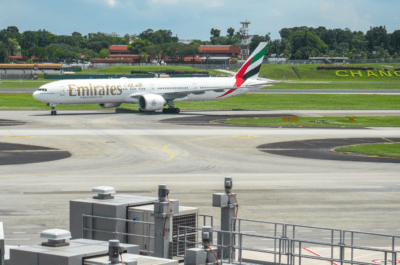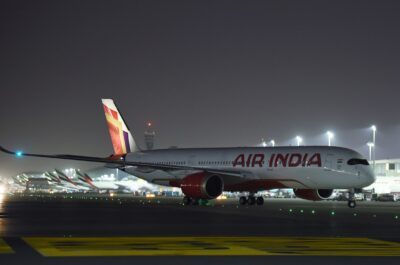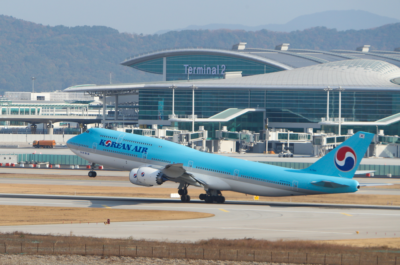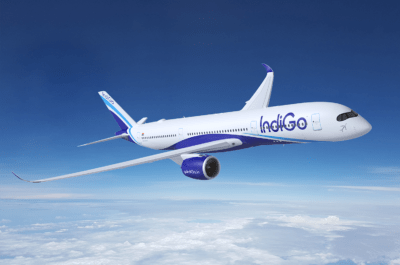…
Director General of ACI World, Angela Gittens announced the publication of ACI’s WorldAirport Traffic Report for 2009 – the most comprehensive source of global airport traffic data available on the market.
Gittens says, “This is a unique airport industry reference product that provides an analytical review of traffic data for over 1350 airports, with illustrative charts and tables. Against the background of the worst global recession since the Second World War, total global passenger traffic at airports declined by 1.8 percent in 2009 relative to 2008. Cargo tonnage fell by 7.9 percent, reflecting the direct impact on global markets and productivity during the severe economic downturn. We explain the underlying reasons for the traffic results and show how the trends evolved over the year.
Headline results summary
- Worldwide airport passenger numbers dropped by 1.8% in 2009 to 4.796 billion, from a high of 4.882 billion in 2008.
- Middle East (+7.7%), Asia-Pacific (+4.9%) and Latin America-Caribbean (+1.5%) maintained growth.
- Europe and North America registered significant decreases of 5.4% and 5.2% respectively followed by Africa (-0.6%)
- Worldwide domestic traffic was flat (-0.2%) while international traffic dropped 3.9%
- Worldwide aircraft movements decreased by 5.1% to 74.1 million
- Total cargo volumes handled by airports fell by 7.9% to 79.8 million tonnes
- 38% of airports worldwide registered passenger growth, at an average of 10.2%. The gaining airports represent 31.7% of worldwide traffic
- 62% of airports worldwide lost traffic, at an average rate of 6.5% representing 68.3% of global passengers
- Two thirds of airports with over 5 million passengers (147) lost traffic in 2009 at an average rate of -5.6%
Commenting on the headline results, Gittens says, “In 2009, we witnessed two quite different semesters. During the first half of the year, overall traffic continued to spiral downwards due to the impact of deepening economic uncertainty, falling industrial production and falling GDP. Exceptional factors such as the H1N1 influenza virus pandemic had an adverse impact on traffic in May and June, reaching beyond the borders of Latin America to North America, Asia Pacific and Europe.
“The mid-year months ushered in the glimmer of a rebound, with traffic losses slowing and even stabilizing in a few key developing markets. Domestic traffic in emerging markets began to exhibit new expansion, not just a positive comparison to past poor performance, in part thanks to government stimulus packages that were boosting industrial output and economic stability. China, Brazil and India were leaders in this trend. As is often the case, domestic traffic is a precursor of returning international traffic and that is what we saw in the third quarter, with general improvements in almost all markets.
“The end result for the year was that, despite the tremendous hit the industry took in the first term, renewed passenger traffic growth balanced out those losses and yielded a decline of 1.8 percent for the full year. At the same time, the 5.1 percent drop in aircraft movements indicates the extent to which airlines dropped routes and trimmed excessive capacity in an effort to stabilize their service offerings.
“Cargo fared less well in 2009. The vertiginous drops in freight traffic seen in the first months of the year provided a clear sign of global economic stress. The reversal of that downward spiral later in the year could not make up for such steep losses. As a result, traffic for the year dropped by an average of 7.9 percent.”
International cargo accounted for 63% of the total cargo volume and shrank by 9.5%; domestic cargo, accounting for 37% of total cargo volume, dropped by 6%. Memphis, USA remains by far the largest domestic cargo hub in the world followed by Louisville, USA. Despite a 7.5% fall, Hong Kong remains the world’s largest international cargo hub followed by Incheon, Korea (-5%). Dubai has grown by 6% catapulting it to rank 3, up five ranks from 2008.
Commenting on regional differences, Gittens says, “Passenger numbers by region show a clear disparity between two groupings: growing traffic in Asia-Pacific, Latin America-Caribbean, and Middle East on the one hand, and losses in the African, European and North American markets on the other. While the Middle East continued to gain market share in the international sector throughout the year, Asia-Pacific and Latin America-Caribbean were cushioned by robust demand for domestic air travel.”
The traffic drops in the first quarter were the deepest in Europe and North America and their recovery trajectory was shallow showing patchy growth in the fourth quarter. Africa experienced a smaller drop in traffic with stronger recovery signs. Latin America-Caribbean struggled with the fallout of the H1N1 outbreak over the summer which hampered underlying stronger growth, while Asia-Pacific emerged definitively from the crisis in the second half of the year.
Vicky is the co-founder of TravelDailyNews Media Network where she is the Editor-in Chief. She is also responsible for the daily operation and the financial policy. She holds a Bachelor's degree in Tourism Business Administration from the Technical University of Athens and a Master in Business Administration (MBA) from the University of Wales. She has many years of both academic and industrial experience within the travel industry. She has written/edited numerous articles in various tourism magazines.

























































![[PR] PR_Ascott and Vimut Hospital_2024](https://www.traveldailynews.asia/wp-content/uploads/2024/04/PR-PR_Ascott-and-Vimut-Hospital_2024-400x265.jpg)







